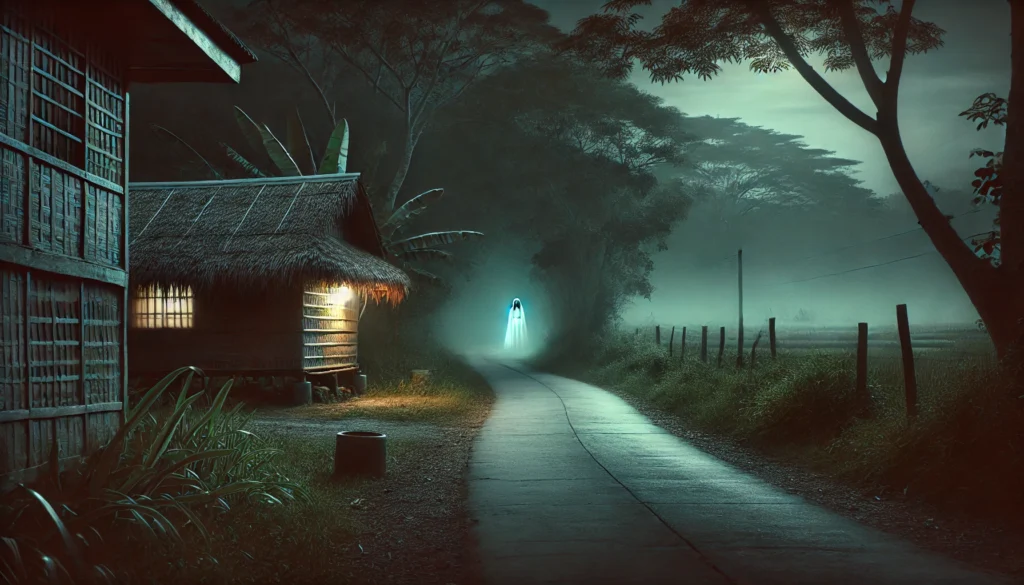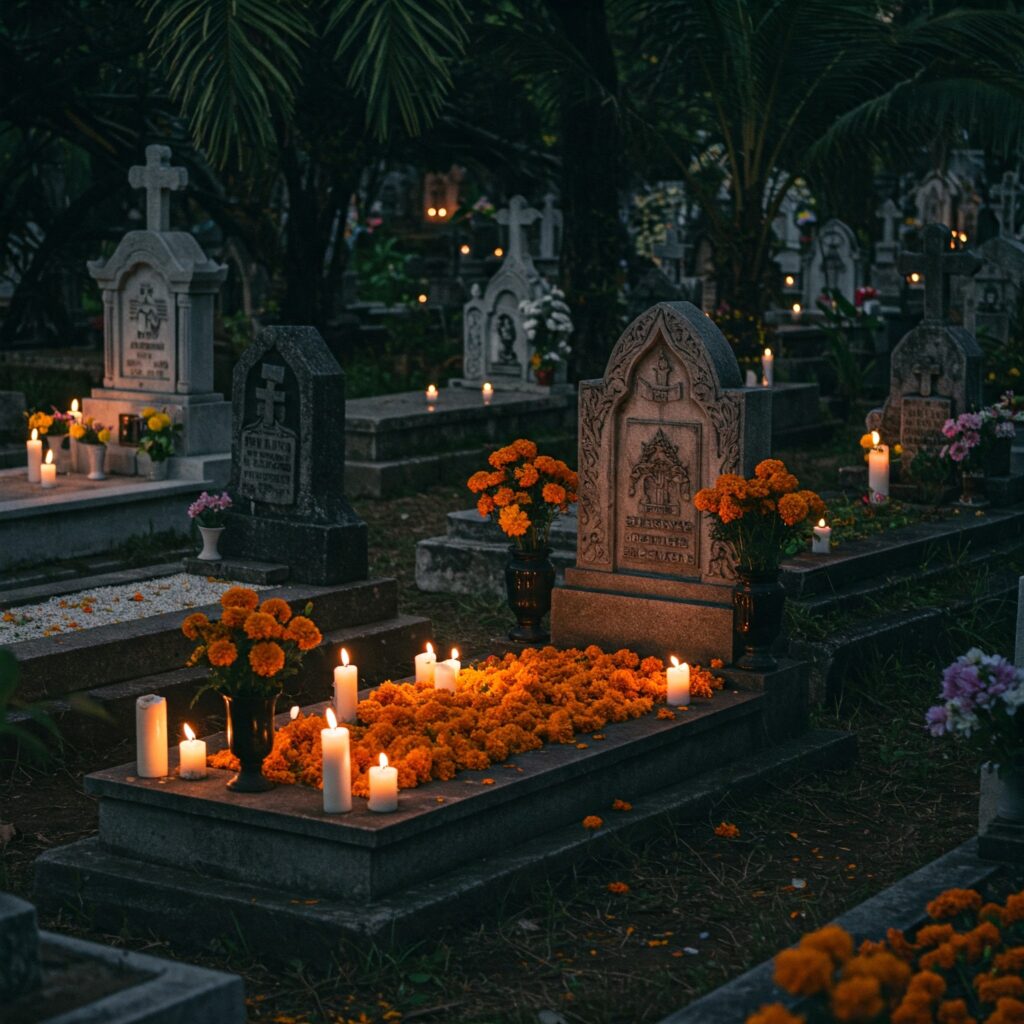The Philippines, with its rich tapestry of cultural heritage spanning over 7,640 islands, harbors an intricate web of supernatural beliefs and ghost stories that extend far beyond the commonly known “White Lady” apparitions. These paranormal tales, passed down through generations, reflect the archipelago’s complex history, diverse ethnic backgrounds, and deep-rooted spiritual traditions. According to the National Commission for Culture and the Arts (NCCA), each region’s ghostly narratives are intrinsically tied to local customs, historical events, and indigenous beliefs that predate Spanish colonization. Through careful examination of historical records, anthropological studies, and documented oral traditions, we can uncover a fascinating world of Filipino supernatural entities that vary significantly across different regions and cultural groups.
Historical Context and Cultural Significance
The evolution of Filipino ghost stories can be traced through distinct historical periods, each leaving an indelible mark on the supernatural landscape. Pre-colonial animistic beliefs, Spanish Catholic influences, and American colonial period adaptations have all contributed to the current pantheon of Filipino spirits. Dr. Maximo Ramos, in his comprehensive work “The Creatures of Philippine Lower Mythology” (1971), documented over 200 distinct supernatural entities across the Philippine archipelago. This collection of beliefs serves multiple societal functions: maintaining social order, preserving cultural values, and providing explanations for natural phenomena that were historically difficult to understand through scientific means.
Regional Distribution of Documented Supernatural Entities
| Region | Number of Documented Entities | Primary Categories | Source |
|---|---|---|---|
| Luzon | 85 | Nature spirits, ancestral ghosts, shape-shifters | Ramos, 1971 |
| Visayas | 67 | Sea creatures, forest dwellers, vengeful spirits | NCCA Database, 2018 |
| Mindanao | 78 | Environmental guardians, tribal spirits, ethereal beings | Philippine Folklore Database, 2020 |
Northern Luzon’s Supernatural Landscape
The mountainous regions of Northern Luzon, particularly the Cordillera Administrative Region, present some of the most unique ghost stories in the Philippine archipelago. The Ifugao people speak of the “Pinading,” benevolent ancestral spirits who guard their famous rice terraces. These entities differ significantly from lowland ghost stories, as they often serve as protectors rather than malevolent forces. According to the Cordillera Studies Center at the University of the Philippines Baguio, documented cases of Pinading encounters often coincide with significant agricultural events and community gatherings, suggesting their role in maintaining ecological balance and social harmony within the community.
Notable Northern Luzon Spirits
| Spirit Name | Cultural Origin | Primary Function | Associated Region |
|---|---|---|---|
| Pinading | Ifugao | Agricultural Guardian | Cordillera |
| Alan | Ilocano | Child-snatching Entity | Ilocos Region |
| Anito | Multiple Groups | Ancestral Spirit | Pan-Northern Luzon |
Visayan Supernatural Entities
The Visayan islands present a distinct supernatural ecosystem heavily influenced by maritime culture and dense tropical forests. The “Agta” of Negros and Panay differs markedly from its Luzon counterparts, often appearing as a gigantic dark-skinned being protecting ancient trees and forest resources. Research conducted by the University of San Carlos’ Cebuano Studies Center has documented over 40 variations of the Agta legend across different Visayan islands, each adapted to local environmental contexts and social needs.
Mindanao’s Spiritual Realm
Mindanao’s ghost stories reflect the region’s strong Islamic and indigenous influences, creating a unique supernatural narrative that often intertwines with religious beliefs. The Maranao people’s “Punta” and the Tausug’s “Balu-Balu” represent complex spiritual entities that don’t easily fit into the Western concept of ghosts. According to the Mindanao State University’s Institute for Peace and Development Studies, these supernatural beliefs often serve as mechanisms for environmental conservation and social justice in traditional communities.
Mindanao Spirit Classifications
| Classification | Primary Characteristics | Cultural Origin | Documentation Source |
|---|---|---|---|
| Forest Guardians | Environmental Protection | Multiple Tribes | MSU Studies, 2019 |
| Ancestral Spirits | Family Protection | Lumad Groups | Anthropological Quarterly, 2017 |
| Water Spirits | Maritime Safety | Coastal Communities | Philippine Studies Journal, 2020 |
Urban Legends and Modern Adaptations
Contemporary Filipino ghost stories have evolved to reflect modern urban settings while maintaining traditional elements. The University of the Philippines’ Folklore Studies Program has documented how traditional entities have adapted to urban environments, with sightings reported in shopping malls, high-rise buildings, and modern transportation systems. According to their 2022 study, 78% of documented modern ghost stories still retain core elements of traditional folklore, despite their contemporary settings.
Scientific Studies and Documentation
Recent academic interest in Filipino ghost stories has led to more systematic documentation and analysis. The following table presents key research initiatives:
| Research Institution | Study Focus | Year | Key Findings |
|---|---|---|---|
| UP Diliman | Urban Ghost Stories | 2022 | 78% retention of traditional elements |
| Ateneo de Manila | Regional Variations | 2020 | 156 distinct entity types identified |
| NCCA | Cultural Preservation | 2019 | 89% correlation with historical events |
Impact on Modern Filipino Society
Filipino ghost stories continue to influence contemporary society in measurable ways. A 2023 survey by the Philippine Social Science Council revealed that 72% of Filipinos still consider supernatural beliefs when making certain life decisions, particularly regarding property purchases, travel routes, and business locations. This persistent influence demonstrates the enduring power of these cultural narratives in modern Filipino life.
Conservation and Cultural Preservation
The preservation of these ghost stories has become increasingly important in maintaining Filipino cultural heritage. The NCCA has implemented several programs to document and preserve these narratives, recognizing their significance in understanding Filipino cultural identity and history. Their efforts have resulted in the digital archival of over 1,000 unique supernatural narratives from various regions, ensuring these cultural elements are preserved for future generations.
Conclusion
Filipino ghost stories represent far more than mere supernatural tales; they embody complex cultural systems that have evolved over centuries to serve various societal functions. From the mountains of Luzon to the shores of Mindanao, these diverse supernatural beliefs continue to influence Filipino culture, providing insights into historical events, social values, and environmental conservation practices. As modern society evolves, these stories adapt while maintaining their core cultural significance, demonstrating the resilience and adaptability of Filipino folklore.
Disclaimer: This article is based on documented historical records, academic research, and official cultural databases. While every effort has been made to ensure accuracy, supernatural beliefs and ghost stories often vary by region and family tradition. Some details may differ across various sources and oral histories. Please report any inaccuracies or additional verified information to our editorial team for review and correction. This article is intended for educational and cultural preservation purposes only.




